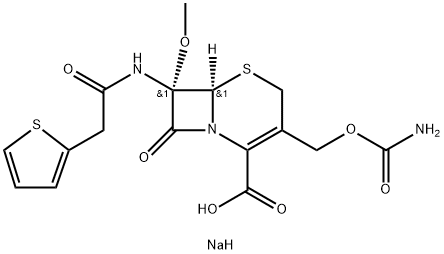Cefoxitin Sodium: An Overview of Its Uses, Properties, and Importance in Medicine
2024-08-07
Cefoxitin sodium is a widely used antibiotic in the medical field, known for its effectiveness in treating a variety of bacterial infections. As a member of the cephalosporin class of antibiotics, cefoxitin sodium plays a crucial role in combating infections, especially those caused by Gram-negative bacteria. In this blog, we will delve into the properties, uses, and significance of cefoxitin sodium, highlighting its role in modern medicine.
1. What is Cefoxitin Sodium?
Cefoxitin sodium is the sodium salt form of cefoxitin, a second-generation cephalosporin antibiotic. It is used to treat a range of bacterial infections by interfering with bacterial cell wall synthesis. This interference leads to the destruction of the bacteria, thereby treating the infection.
Chemical Properties:
- Chemical Formula: C16H15N3NaO7S2
- Molecular Weight: 437.43 g/mol
- Solubility: Cefoxitin sodium is soluble in water, which makes it suitable for intravenous (IV) administration.
2. Mechanism of Action
Cefoxitin sodium works by inhibiting bacterial cell wall synthesis. It binds to specific proteins known as penicillin-binding proteins (PBPs) located in the bacterial cell wall. By binding to these proteins, cefoxitin disrupts the cross-linking of peptidoglycan layers, which is essential for cell wall integrity. This disruption leads to bacterial cell lysis and death.
3. Clinical Uses of Cefoxitin Sodium
- Intra-abdominal Infections: Cefoxitin is effective against a range of bacteria responsible for intra-abdominal infections, including those caused by Escherichia coli and Bacteroides species. It is often used in surgical prophylaxis to prevent infections during abdominal surgeries.
- Pelvic Infections: It is used to treat pelvic infections, such as pelvic inflammatory disease (PID), caused by susceptible organisms. It helps in managing infections of the reproductive organs and surrounding areas.
- Respiratory Tract Infections: Cefoxitin sodium is used to treat respiratory tract infections caused by susceptible bacteria, including certain types of pneumonia and bronchitis.
- Skin and Soft Tissue Infections: It is effective against skin and soft tissue infections caused by Gram-negative bacteria and some Gram-positive bacteria.
- Bone and Joint Infections: Cefoxitin can be used in treating infections of bones and joints, particularly when the causative bacteria are sensitive to the drug.
4. Dosage and Administration
Cefoxitin sodium is typically administered intravenously or intramuscularly, depending on the severity of the infection and the patient's condition. Dosage and administration schedules vary based on the type and severity of the infection, the patient's age, weight, and kidney function.
Common Dosages:
- Adults: The usual dose for treating serious infections is 1-2 grams every 6-8 hours, administered IV or IM.
- Pediatric Patients: Dosage is adjusted based on the child’s weight and the severity of the infection.
5. Side Effects and Precautions
While cefoxitin sodium is generally well-tolerated, it can cause side effects in some individuals. Common side effects include:
- Gastrointestinal Issues: Nausea, vomiting, diarrhea, and abdominal pain.
- Allergic Reactions: Rash, itching, and, in rare cases, severe allergic reactions such as anaphylaxis.
- Hematological Effects: Changes in blood cell counts, including leukopenia or thrombocytopenia.
Precautions:
- Allergies: Inform your healthcare provider if you have a known allergy to cephalosporins or penicillins.
- Kidney Function: Patients with impaired kidney function may require dosage adjustments.
- Drug Interactions: Be aware of potential interactions with other medications, including anticoagulants and other antibiotics.
6. Resistance and Future Directions
Antibiotic resistance is a growing concern in medicine. While cefoxitin sodium is effective against many bacterial strains, overuse and misuse of antibiotics can lead to the development of resistant strains. Research is ongoing to develop new antibiotics and strategies to combat resistance, ensuring effective treatment options remain available.
7. Conclusion
Cefoxitin sodium is a valuable antibiotic in the cephalosporin class, offering effective treatment for a range of bacterial infections. Its broad-spectrum activity against Gram-negative bacteria and its role in surgical prophylaxis make it an important tool in modern medicine. By understanding its properties, uses, and precautions, healthcare professionals can make informed decisions about its use, ensuring optimal patient outcomes and contributing to the ongoing fight against bacterial infections.



